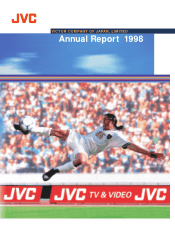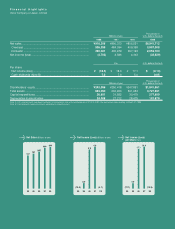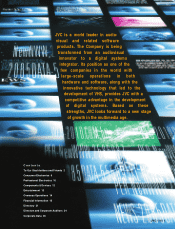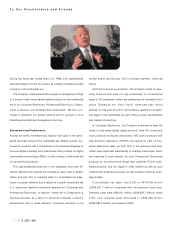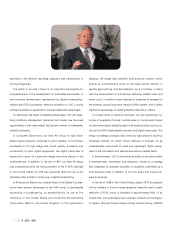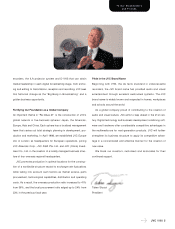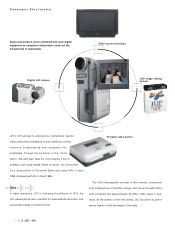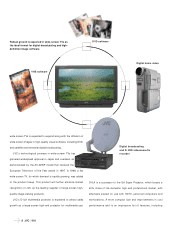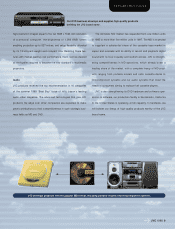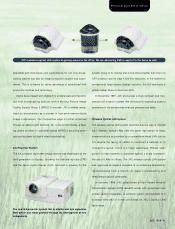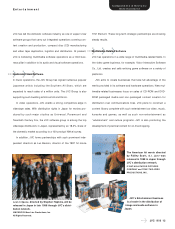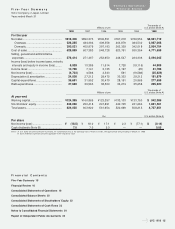JVC 1998 Annual Report Download - page 9
Download and view the complete annual report
Please find page 9 of the 1998 JVC annual report below. You can navigate through the pages in the report by either clicking on the pages listed below, or by using the keyword search tool below to find specific information within the annual report.
JVC 1998 7
In October 1997, JVC announced a D-VHS format VCR for the
U.S. market. D-VHS is a new VHS format that offers digital bit
stream recording and playback of high-quality images and sound
of digital broadcasting. Evolving from the original VHS format, D-
VHS maintains backward compatibility with the vast library of con-
ventional VHS software. Production facilities and technologies
used to make VHS products can be adapted for the production of
D-VHS products, which makes possible production at prices con-
ducive to the popularization of D-VHS.
D-VHS meets the necessary qualifications to become the world
standard in next-generation VCRs. As satellite and terrestrial
broadcasting in North America, Europe, Japan and Asia gradually
become digitized, JVC will introduce its D-VHS VCRs in line with
each market’s progress toward digital broadcasting.
JVC continues to add value to the S-VHS format. In April 1998,
S-VHS ET technology was announced as an extension of S-VHS,
making possible high-quality 400-line resolution S-VHS recording
on standard VHS tapes. As of 1997, the S-VHS format holds an
11% share of the domestic market. The release of S-VHS ET is
expected to increase market share of the S-VHS format and
strengthen JVC’s position in the market.
Since their release in 1995, sales of DV format digital
Consumer Electronics
JVC advances VHS technology in response to the needs of the era with S-VHS ET (left) and D-VHS VCRs.
camcorders have continued to achieve dramatic growth, with their
share of the domestic camcorder market forecasted to expand
from 66% in 1997 to 80% in 1998.
In 1995, JVC released the epoch-making GR-DV1 digital cam-
corder, beginning a new trend in camcorders. Since then, JVC has
led growth in the DV camcorder market by introducing models
teeming with such advances that usher in the multimedia
camcorder as unparalleled high-quality images, excellent portabil-
ity, creative editing functions and connectivity to other digital
equipment.
In 1998, JVC released the GR-DVY, the world’s smallest and
lightest DV camcorder with an LCD monitor, further identifying the
JVC brand name with DV camcorders. In addition to the GR-DVY,
JVC released a pocket video printer and digital still cameras.
JVC calls these products Pocket Communications Tools for the
digital age.
Television
JVC is a pioneer in the development of wide-screen TVs with a
16:9 aspect ratio and is expanding the market with its competitive
products. The domestic market is forecast to grow to approxi-
mately 1.85 million units in fiscal 1998. Replacement demand for

